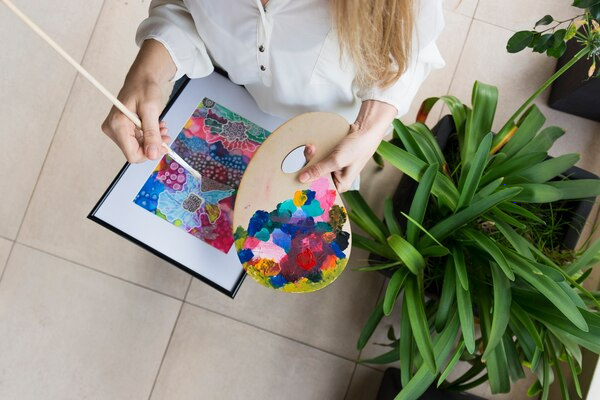Exploring the Intersection of Art and Technology
Art and technology have traditionally been seen as polar opposites: one driven by emotion and creativity, the other by logic and precision. However, as advances in technology continuously alter the landscape of our daily lives, the boundaries between art and technology are becoming increasingly blurred. This intersection has given rise to a fascinating fusion that is challenging our definitions of both art and innovation.

One of the most significant developments at this intersection is the advent of digital art. Artists are now leveraging software programs, virtual reality (VR), and artificial intelligence (AI) to create works that were previously unimaginable. Digital tools allow for an unprecedented level of precision and complexity, enabling artists to experiment with new forms and structures. For instance, AI algorithms can generate complex patterns and designs based on user input, leading to unique, one-of-a-kind pieces.
Virtual reality is another arena where art and technology converge in exciting ways. VR provides an immersive experience, allowing viewers to step into a different world, fully fabricated by the artist. This opens up endless possibilities for storytelling and emotional engagement. An artist can guide a viewer through a moving narrative or an abstract concept, creating a multi-sensory experience that extends beyond traditional mediums such as painting or sculpture.
Beyond creating new forms of art, technology is also transforming how art is shared and consumed. Social media platforms and online galleries have democratized art, making it accessible to a global audience. Blockchain technology and NFTs (non-fungible tokens) are revolutionizing the art world by providing a secure way to buy, sell, and authenticate digital art. This has led to a surge in interest and investment in digital art forms, legitimizing them in the eyes of traditionalists.
Moreover, the intersection of art and technology is not just limited to visual arts. Music, literature, and performing arts are also being transformed. AI-driven compositions, digital publishing platforms, and virtual theater performances are changing how these age-old forms are produced and experienced. Musicians use sophisticated software to create and mix tunes that would be difficult to achieve with traditional instruments. Writers use AI tools for everything from generating plot ideas to improving grammar and style. Performers incorporate augmented reality (AR) into live shows, creating a dynamic interaction between the artist and the audience.
The convergence of art and technology also raises intriguing philosophical questions. What constitutes creativity in an age where machines can produce artworks? Can a piece of digital art invoke the same emotional response as a traditional painting? These questions compel us to reconsider the subjective nature of art and the varying interpretations of creativity and innovation.
Critics argue that reliance on technology may stifle the human element inherent in artistic endeavors. However, supporters believe that technology is merely another tool, much like a paintbrush or a musical instrument, which can enhance and expand the creative potential of the artist. It is up to the individual artist to decide how to balance traditional techniques with modern innovations.
In conclusion, the blending of art and technology is reshaping not only how we create and appreciate art but also how we define it. This intersection is expanding the boundaries of human creativity, offering new modes of expression and engagement. As we continue to explore this fascinating fusion, one thing is certain: the relationship between art and technology will remain a dynamic and evolving interplay, reflecting the ever-changing nature of human innovation and imagination.